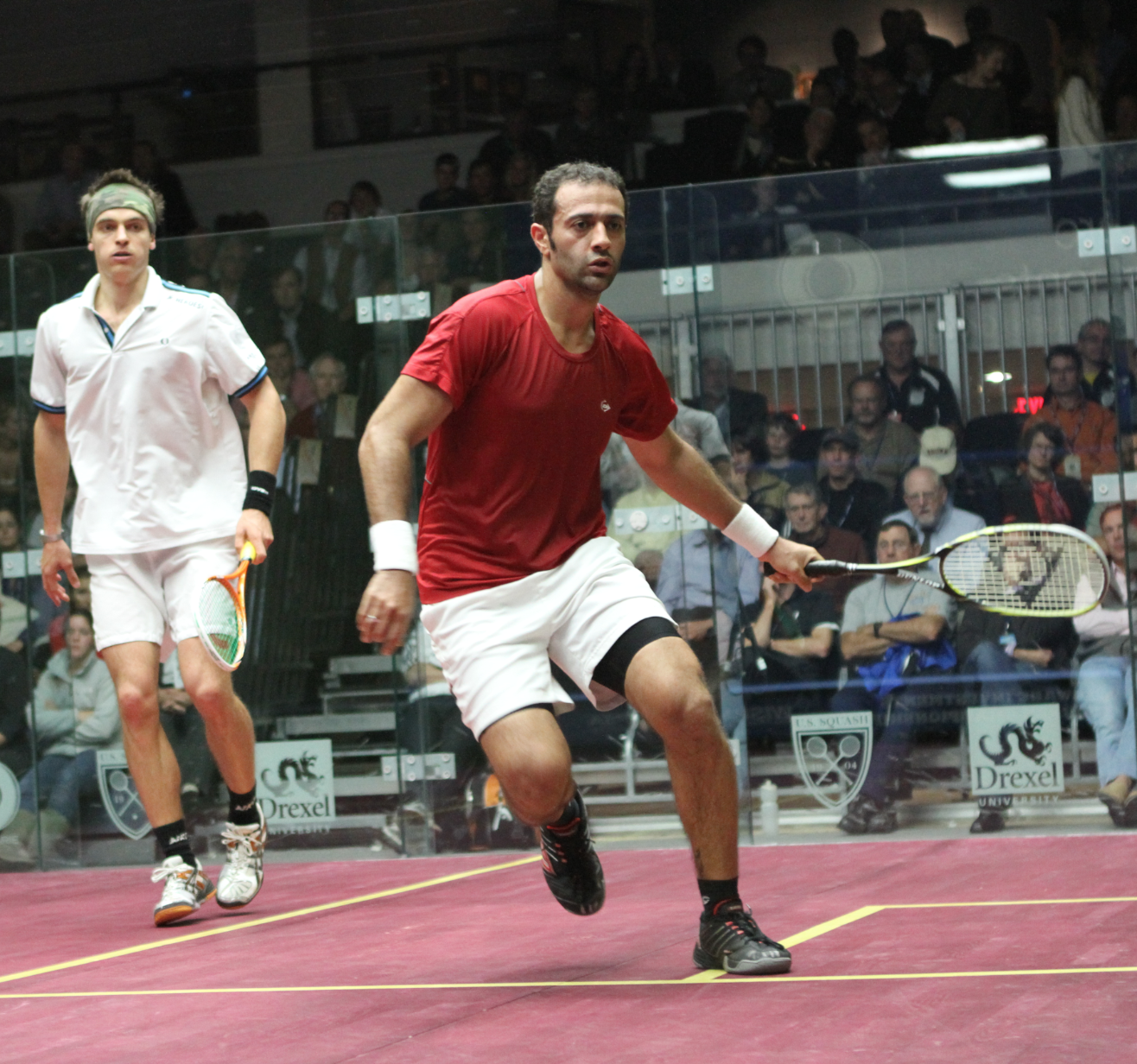By Richard Millman, Owner – The Squash Doctor Corporation
This month I am going to talk about movement training. Some traditional methods of training Squash players to move on the court have included the use of pre-prescribed ‘shapes’ – the most notorious of these being the ‘banana’.
As with all of these images, the intended aid actually becomes an impediment. Why?
To retain maximum focus in any competitive environment it is absolutely essential to use the two forms of focus that allow us to keep physically up to date with the action and mentally slightly ahead—so that our thought process allows us to consider possible outcomes of our actions and our opponent’s actions with enough lead time to consider our possible options in response to those manifold possibilities.
These two attention systems are our DIRECT FOCUS (with which we attend to the ball—our lifeline connection to the game), and our PERIPHERAL FOCUS (with which we attend to all other things apart from that which is covered by our DIRECT FOCUS in Squash, other than the ball).

Anything that interferes with DIRECT FOCUS—even momentarily—threatens our connection to the ball, making us vulnerable while our attention is distracted and therefore open to an attack that we cannot immediately respond to. As Squash is indeed a game of ‘immediately’ and moments, a momentary loss of focus is disastrous.
Imagine for a moment the days of the Three Musketeers. D’Artagnan is in a duel for his life with Rochefort. Rochefort is attacking D’Artagnan up a marble staircase which has twists and turns both right and left as it reaches the next floor. D’Artagnan’s DIRECT FOCUS never leaves Rochefort’s sword. But at the same time, his extraordinary PERIPHERAL FOCUS is constantly engaged, relaying to his mind his position and the environment around him. A moment’s loss of DIRECT FOCUS will result in a thrust through the heart, while a moment’s loss of PERIPHERAL FOCUS will result in him stumbling or being backed into a corner and a consequent massive reduction of options.
Consider then the Squash player who has been told to use a ‘banana’ as a guide for movement into a corner to both gain the next advantageous position (movement for the next phase of the rally) and hit the ball.
We know that a player’s DIRECT FOCUS must stay on the ball at all times—or suffer the thrust through the heart that lack of attention leads to. If a trusted friend or coach directs the player’s attention to a ‘banana’ or other shape, what will happen to their DIRECT FOCUS? It will of course be diluted and the player will become vulnerable to the metaphoric fatal thrust that inattention leads to.
How then to perfect one’s movement patterns?
Human beings have extraordinary hand-eye coordination—provided accurate coordinates are fed into the brain to calculate the intersect point with the ball. Any approximation or alteration of the precise coordinates leads to a miss-hit or even a whiff if the coordinates are vastly altered or approximated after the initial preparation.
Where does a player get accurate coordinates from? Certainly not from a direction to follow a ‘banana!’ Each separate movement must be accurately calculated. To do this a Squash player must combine their DIRECT FOCUS and their PERIPHERAL FOCUS.
By preparing the racquet before moving into position and by maintaining a uniform preparation (no movement in the racquet after beginning the approach) the subconscious mind can precisely inform the body of where and how to move to both set up the recovery and execute the shot (this sequence is imperative—not the reverse).
The key here is the combination of the subconscious mind (immensely more powerful than the conscious mind that tries to focus on the banana), precise and consistent preparation and the feedback to the DIRECT AND PERIPHERAL attention systems that gives the player exact instructions and information as to where and how to move.
Instructions such as the ‘banana’ and the like immediately engage the conscious mind and lead to both the player’s DIRECT FOCUS being distracted from the ball and their PERIPHERAL FOCUS losing track of the player’s position and the playing environment.
Thus isolated from reality and the moment, the player is vulnerable and loses time and position in the duel. And D’Artagnan dies.
To learn excellent movement, use your racquet to coordinate your relationship with the ball—even when you are ghosting without the ball. By imagining the ball at all times, your DIRECT FOCUS and your PERIPHERAL FOCUS continuously combine to maximize both your connection with the ball and your situation in the playing environment.
Well-intentioned teaching aids such as ‘the T’ or ‘banana’ are distracting and not helpful—when distraction can be ill afforded.
So ‘en guard!’ Rochefort, I am fully at attention.





